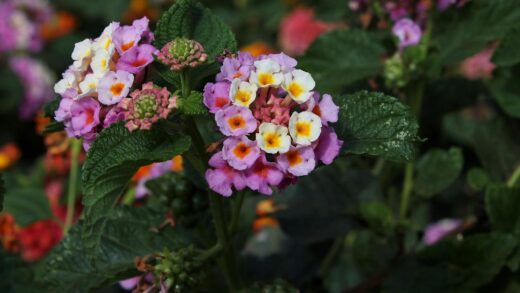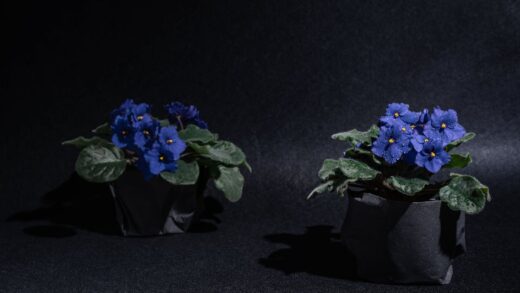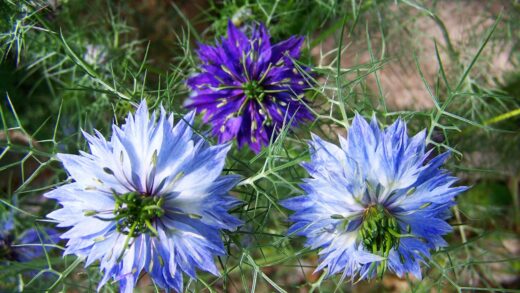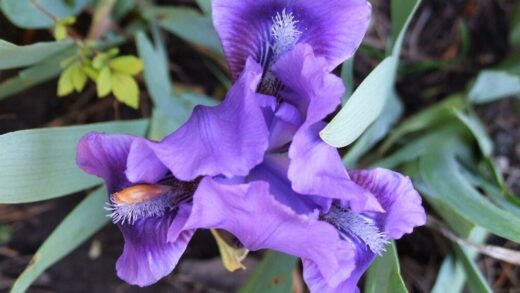The process of wintering for the clusius-tulip is a phase of quiet endurance, a period of dormancy where the bulb gathers its strength beneath the frozen or chilled earth, preparing for the vibrant explosion of life in the spring. Unlike many tender garden plants that require elaborate protection, this species tulip is remarkably well-adapted to withstand cold winter temperatures, a trait inherited from its native mountainous habitats where harsh winters are the norm. Successful wintering is less about active intervention and more about ensuring the correct conditions were established in the autumn. It is a testament to the fact that proper planting and site selection are the most crucial elements of winter care. Providing the right environment from the start allows the bulb to follow its natural cycle without the need for excessive coddling.
The primary concern during the winter is not the cold itself, but rather the combination of cold and excessive moisture. The clusius-tulip bulb is most vulnerable to rot when it is forced to sit in cold, waterlogged soil for extended periods. This is why the emphasis on sharp drainage is so relentless; it is a prerequisite for survival. Well-drained soil prevents water from pooling around the bulb, mitigating the risk of decay and ensuring that the bulb remains healthy, albeit dormant, throughout the winter months. The winter period is a test of the groundwork laid in the autumn.
While generally hardy, the degree of winter protection required can depend on the severity of the climate. In regions that fall within its recommended hardiness zones, the clusius-tulip typically requires no special winter care once it is in the ground. However, in colder, borderline zones or in areas with fluctuating temperatures and little reliable snow cover, a protective layer of mulch can be a beneficial insurance policy. This mulch serves not so much to keep the ground warm, but to keep it consistently cold, preventing premature sprouting during brief winter thaws.
Ultimately, the wintering phase highlights the self-sufficiency of this remarkable species. It is a period where the gardener must trust in the resilience of the bulb and the preparations made during planting season. The quiet and seemingly inactive garden bed holds the promise of spring, with the bulbs below ground undergoing the crucial chilling period required to trigger blooming. Understanding this dormant phase and providing the simple, yet essential, conditions for its success is the key to a rewarding and recurring spring display.
Natural hardiness and chilling requirements
The clusius-tulip is a hardy bulb, generally capable of surviving in USDA hardiness zones 3 through 8. This wide range of adaptability is a direct result of its origins in high-altitude regions that experience significant winter cold. The bulbs are not only tolerant of freezing temperatures but actually require a prolonged period of cold exposure, known as vernalization, in order to initiate the biochemical processes that lead to flowering. Without this chilling period, the bulb may produce foliage but will fail to form a flower bud.
More articles on this topic
This mandatory cold requirement means that the clusius-tulip is not well-suited for cultivation in hot climates that do not experience a true winter. The bulbs need approximately 12 to 16 weeks of temperatures below 7°C (45°F) to break dormancy and bloom properly. In most temperate climates, the natural winter weather provides this chilling period without any need for intervention from the gardener. The bulbs simply rest dormant underground, and the seasonal temperature drop provides the necessary trigger for their spring performance.
The hardiness of the bulb allows it to withstand the ground freezing solid. The key to its survival in these conditions is being planted at the correct depth. A planting depth of 15 to 20 centimeters provides a significant amount of insulation, protecting the bulb from the most extreme temperature fluctuations at the soil surface. This depth ensures that the bulb remains in a consistently cold environment, preventing it from being tricked into sprouting by a mid-winter warm spell, which could result in the tender new growth being damaged by a subsequent hard frost.
Therefore, the most important aspect of ensuring the clusius-tulip’s winter survival is to respect its inherent need for cold. Gardeners in warmer zones who wish to grow these tulips sometimes have to resort to artificially chilling the bulbs in a refrigerator for the required period before planting them out as annuals. However, for those in suitable climates, the best approach is to plant them in the autumn and let nature provide the essential chilling that is coded into the bulb’s DNA.
The role of mulch in winter protection
In most regions where the clusius-tulip is hardy, winter mulching is not strictly necessary, but it can be a highly beneficial practice, especially in certain situations. The primary purpose of applying a layer of mulch over the tulip bed in late autumn is not to keep the soil warm, but rather to keep it frozen. This may sound counterintuitive, but it helps to insulate the ground against fluctuating air temperatures. A consistent, frozen state is preferable to a cycle of freezing and thawing, which can heave the bulbs out of the ground and damage their roots.
More articles on this topic
A layer of mulch is particularly valuable in colder climates (zones 3-5) or in any region that experiences cold winters without a reliable blanket of snow. Snow is an excellent natural insulator, providing a protective layer that keeps the soil temperature stable. In the absence of snow cover, the soil is more exposed to cycles of freezing and thawing. A 5 to 10-centimeter layer of organic mulch, such as shredded leaves, pine straw, or bark chips, can effectively replicate the insulating properties of a snowpack.
The ideal time to apply winter mulch is in the late autumn or early winter, after the ground has frozen but before the coldest temperatures of the season arrive. Applying the mulch too early, while the ground is still warm, can trap heat and moisture, potentially leading to bulb rot. It can also provide a cozy winter home for rodents, which may then feast on the bulbs you are trying to protect. Waiting for the ground to freeze first avoids these potential problems.
In the spring, it is important to rake back the mulch as the weather begins to warm up and before the new tulip shoots start to emerge. This allows the sun to warm the soil and prevents the mulch from becoming a barrier that the delicate new growth has to struggle through. Removing the mulch also helps the soil to dry out more quickly, reducing the risk of fungal diseases as the tulips enter their active growth phase.
Wintering bulbs in containers
Wintering clusius-tulips in containers requires more attention than for those planted in the garden. The soil in pots is exposed to cold air on all sides, making it freeze much faster and to a colder temperature than the insulated ground. This can be fatal to the bulbs, even for a hardy species like the clusius-tulip. Therefore, container-grown bulbs need additional protection to survive the winter, especially in colder climates.
One of the most effective methods for protecting container-grown tulips is to move the pots into an unheated but sheltered location, such as a garage, a cold frame, or a garden shed. This location should be cold enough to provide the necessary chilling period but will protect the pots from the harshest winter winds and extreme temperature drops. The key is to keep the pots cold, but to prevent the soil from freezing solid for a prolonged period.
If a sheltered location is not available, the pots can be left outdoors with added insulation. This can be achieved by grouping the pots together against a sheltered wall and then surrounding them with a thick layer of insulating material, such as bubble wrap, burlap bags filled with leaves, or straw bales. Another method is the “pot-in-pot” technique, where the decorative pot containing the bulbs is placed inside a larger pot, with the gap between the two filled with an insulating material like wood chips or sand.
During the winter, container-grown bulbs will need to be monitored for moisture, though they will require very little. The goal is to prevent the soil from drying out completely. The soil should be kept barely moist to the touch. In a sheltered location, this might mean watering lightly only once every month or so. Overwatering is a significant risk, as the cold, wet soil can easily lead to rot. This careful balance of insulation and moisture management is key to successfully overwintering tulips in pots.
Avoiding common winter problems
One of the most significant winter threats to clusius-tulips is poor drainage. During winter, periods of rain or melting snow can lead to standing water or saturated soil. If the bulbs are in a location that does not drain well, they will be sitting in cold, wet conditions, which is a perfect recipe for bulb rot. This underscores the importance of choosing and preparing the planting site correctly in the autumn. A raised bed or a natural slope can be an ideal location to ensure that excess winter moisture drains away freely.
Winter heaving is another problem that can occur, particularly in heavy clay soils that are prone to freezing and thawing cycles. This repeated expansion and contraction of the soil can gradually push the bulbs upwards, sometimes exposing them on the surface where they are vulnerable to drying out or being eaten by animals. Planting the bulbs at the recommended deeper level of 15-20 cm and applying a layer of mulch after the ground freezes can significantly reduce the risk of soil heaving.
Excessive winter moisture can also compact the soil surface, which can be an issue in the spring. A layer of mulch helps to prevent this by absorbing the impact of heavy rain and slowing down the rate of water runoff. It helps to maintain a more open and friable soil structure, which makes it easier for the tulip shoots to emerge once spring arrives. This protection of the soil structure is an often-overlooked benefit of winter mulching.
Finally, it is important to be aware of rodent activity during the winter. With other food sources scarce, voles, mice, and squirrels may be more actively searching for bulbs. A protective layer of mulch can sometimes make tunneling easier for these pests. If rodents are a known problem in your area, it may be prudent to take preventative measures in the autumn, such as planting in wire cages or using deterrents, rather than relying solely on a thick layer of mulch that could inadvertently provide cover for them.




















